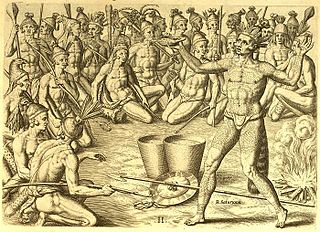 W
WEthnobotany is the study of a region's plants and their practical uses through the traditional knowledge of a local culture and people. An ethnobotanist thus strives to document the local customs involving the practical uses of local flora for many aspects of life, such as plants as medicines, foods, intoxicants and clothing. Richard Evans Schultes, often referred to as the "father of ethnobotany", explained the discipline in this way:Ethnobotany simply means ... investigating plants used by societies in various parts of the world.
 W
WBalm of Gilead was a rare perfume used medicinally, that was mentioned in the Hebrew Bible, and named for the region of Gilead, where it was produced. The expression stems from William Tyndale's language in the King James Bible of 1611, and has come to signify a universal cure in figurative speech. The tree or shrub producing the balm is commonly identified as Commiphora gileadensis. However, some botanical scholars have concluded that the actual source was a terebinth tree in the genus Pistacia.
 W
WBlack drink is a name for several kinds of ritual beverages brewed by Native Americans in the Southeastern United States. Traditional ceremonial people of the Yuchi, Caddo, Chickasaw, Cherokee, Choctaw, Muscogee and some other Indigenous peoples of the Southeastern Woodlands use the black drink in purification ceremonies. It was occasionally known as white drink because of the association of the color white with peace leaders in some Native cultures in the Southeast.
 W
WBraiding Sweetgrass: Indigenous Wisdom, Scientific Knowledge, and the Teachings of Plants is a 2013 nonfiction book by American professor Robin Wall Kimmerer and published by Milkweed.
 W
WCulturally modified tree is a term which describes the modification of a tree by indigenous people as part of their tradition. Their meaning for the indigenous cultures is relatively well known, but only from the beginning of the 1980s scientists have recognized that they are also important sources for the history of certain regions. They are even called CMT archives. Although a wide range of results has been produced, and progress has been made as far as methodology is concerned, the CMTs are still rather unknown to the public.
 W
WEthnomycology is the study of the historical uses and sociological impact of fungi and can be considered a subfield of ethnobotany or ethnobiology. Although in theory the term includes fungi used for such purposes as tinder, medicine and food, it is often used in the context of the study of psychoactive mushrooms such as psilocybin mushrooms, the Amanita muscaria mushroom, and the ergot fungus.
 W
WHuman uses of plants include both practical uses, such as for food, clothing, and medicine, and symbolic uses, such as in art, mythology and literature. The reliable provision of food through agriculture is the basis of civilization. The study of plant uses by native peoples is ethnobotany, while economic botany focuses on modern cultivated plants. Plants are used in medicine, providing many drugs from the earliest times to the present, and as the feedstock for many industrial products including timber and paper as well as a wide range of chemicals. Plants give millions of people pleasure through gardening.
 W
WYellow cedar is a culturally, economically and environmentally significant species to the Pacific Northwest and was used extensively by indigenous peoples throughout the region.
 W
WPaleoethnobotany, or archaeobotany, is the study of past human-plant interactions through the recovery and analysis of ancient plant remains. Both terms are synonymous, though paleoethnobotany is generally used in North America and acknowledges the contribution that ethnographic studies have made towards our current understanding of ancient plant exploitation practices, while the term archaeobotany is preferred in Europe and emphasizes the discipline's role within archaeology.